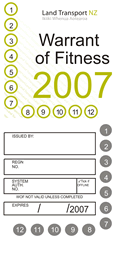
Photo from wikipedia
Abstract The study presented in this paper aims at developing an aid to the modeling of the pass-by noise of a vehicle, as called for in regulatory testing. The goal… Click to show full abstract
Abstract The study presented in this paper aims at developing an aid to the modeling of the pass-by noise of a vehicle, as called for in regulatory testing. The goal is to accurately predict and evaluate noise emissions earlier in the vehicle development cycle, i.e. before the industrialization stage. For these reasons, a synthesis model is developed. This model combines the acoustic flow of the most influent sources (powertrain, intake, exhaust tail, exhaust line, tire/road noise), with the acoustic transfer between these sources and the microphone located at 7.5 m from the axis of the test track, taking into consideration the motion of the vehicle. The input parameters of these models are considered uncertain; therefore, an uncertainty quantification study is first performed. These uncertainties are then propagated in these models using quasi-Monte Carlo methods. Finally, a sensitivity analysis study is carried out to study the impact of the variability of the input parameters on the variability of the output noise levels of the synthesis models. Influential parameters have been identified and classified by vehicle family.
Journal Title: Applied Acoustics
Year Published: 2019
Link to full text (if available)
Share on Social Media: Sign Up to like & get
recommendations!